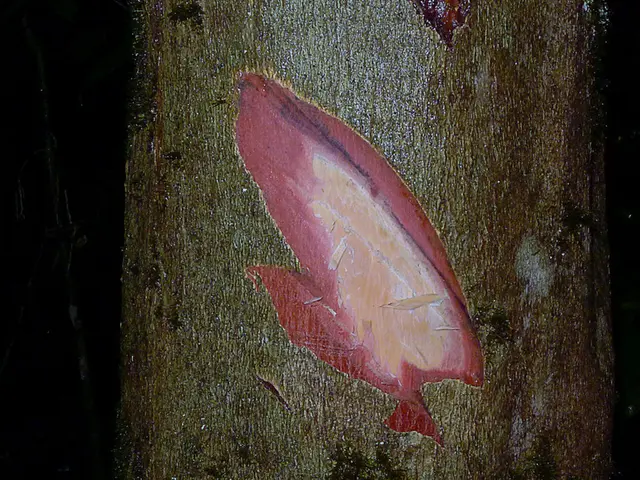Researchers Reveal Rediscovered Brain Zone Tied to Reading Capabilities
Have you ever stumbled upon something overlooked for centuries, right under your nose? That exactly what a team of neuroscientists at the University of Washington's Institute for Learning and Brain Sciences experienced when they happened upon a mysterious structure in the brain during their research on how children develop reading skills.
"Couldn't find it in any atlas," said Jason Yeatman, a researcher on the team. "We thought we had discovered a new pathway that no one else had noticed before."
But the hype soon dissipated when they realized this pathway wasn't new at all. The oddity had simply vanished from the scientific literature, pushed aside by a mishmash of academic oversight, competing theories, and inconsistent nomenclature.
What they found was a relic of the human brain: the long-lost vertical occipital fasciculus (VOF). This structure, first documented by German neurologist Carl Wernicke in 1881, plays a significant role in the processing visual information, from reading to motion perception.
The Hidden Connector: The VOF
The VOF serves as a 5.5-centimeter bundle of long nerve fibers that run vertically along the rear of the brain. It links different visual-processing areas that help us recognize objects, detect motion, and guide our actions.
- The VOF acts as the bridge between the lower visual stream (responsible for recognizing objects and faces) and the upper visual stream (which processes movement and spatial awareness).
- It's speculated that the VOF might be critical for literacy and education.
- In other primates, the VOF has been well-documented, raising the question: How did it get lost in human neuroscience?
The Invisible Hand of Science
It may seem uncanny for scientists to forget about an entire part of the brain, but the VOF's history is steeped in scientific rivalry, academic egos, and human error.
The story begins in the late 1800s when Carl Wernicke first identified the VOF during a monkey brain autopsy. Later, he confirmed the VOF's presence in humans, but his discovery lacked traction for compelling reasons:
- Scientific contradiction: Wernicke's findings contradicted those of his superior, Theodor Meynert, who had a contrary theory about how the brain's pathways operated.
- Nomenclature issues: The VOF appeared in various brain atlases under different names, leading to confusion.
- Hard-to-spot nature: The VOF is difficult to locate during dissections, making it easy to ignore.
- Shifting focus: As neuroscience focused on other areas, such as cortical mapping and neural circuits related to behavior, the VOF slipped further into obscurity.
For a century, the VOF remained obscured, relegated to the annals of forgotten neuroscience. The implications are profound: even in the age of technology and enriched scientific understanding, we're still uncovering hidden gems in human anatomy that have been hiding in plain sight.
A New Age of Neuroscience Insights
The scientific community is now itching to explore the full significance of the VOF. Yeatman's team has mapped the structure in over 70 people and published their findings in the Proceedings of the National Academy of Sciences.
The rediscovery may breathe new life into:
- Literacy and education: The VOF's connection to word recognition and attentiona suggests it plays a significant role in literacy and language processing.
- Visual perception: The VOF helps process both object recognition and motion, which could unlock crucial insights into visual impairments, dyslexia, and conditions like ADHD.
- AI and computer vision: If we can understand how the human brain integrates visual information, it could improve artificial intelligence systems, robotics, and even augmented reality.
The Future of Cognitive Research
Yeatman and his team are currently examining the impact of the VOF on childhood brain development, particularly in relation to reading acquisition and learning disabilities. Meanwhile, other neuroscientists are exploring potential links between disruptions in the VOF and neurological conditions, such as autism, dyslexia, and visual processing disorders.
The VOF rediscovery transcends textbooks and the ivory towers of academia, reminding us that even in 2025, the narrative of neuroscience is still being written, one forgotten piece at a time.
So, the next time you read a book, recognize a friend's face, or react to something moving at the edge of your vision, remember: a long-lost component of your brain is working behind the scenes, making those moments possible.
- The rediscovered vertical occipital fasciculus (VOF) may have profound implications for various aspects of health and wellness, as it could provide new insights into medical-conditions like visual impairments, dyslexia, and ADHD.
- Fitness-and-exercise routines could potentially benefit from a better understanding of the VOF, as it plays a significant role in motion perception, which could aid in improving robotic capabilities and augmented reality technologies.







